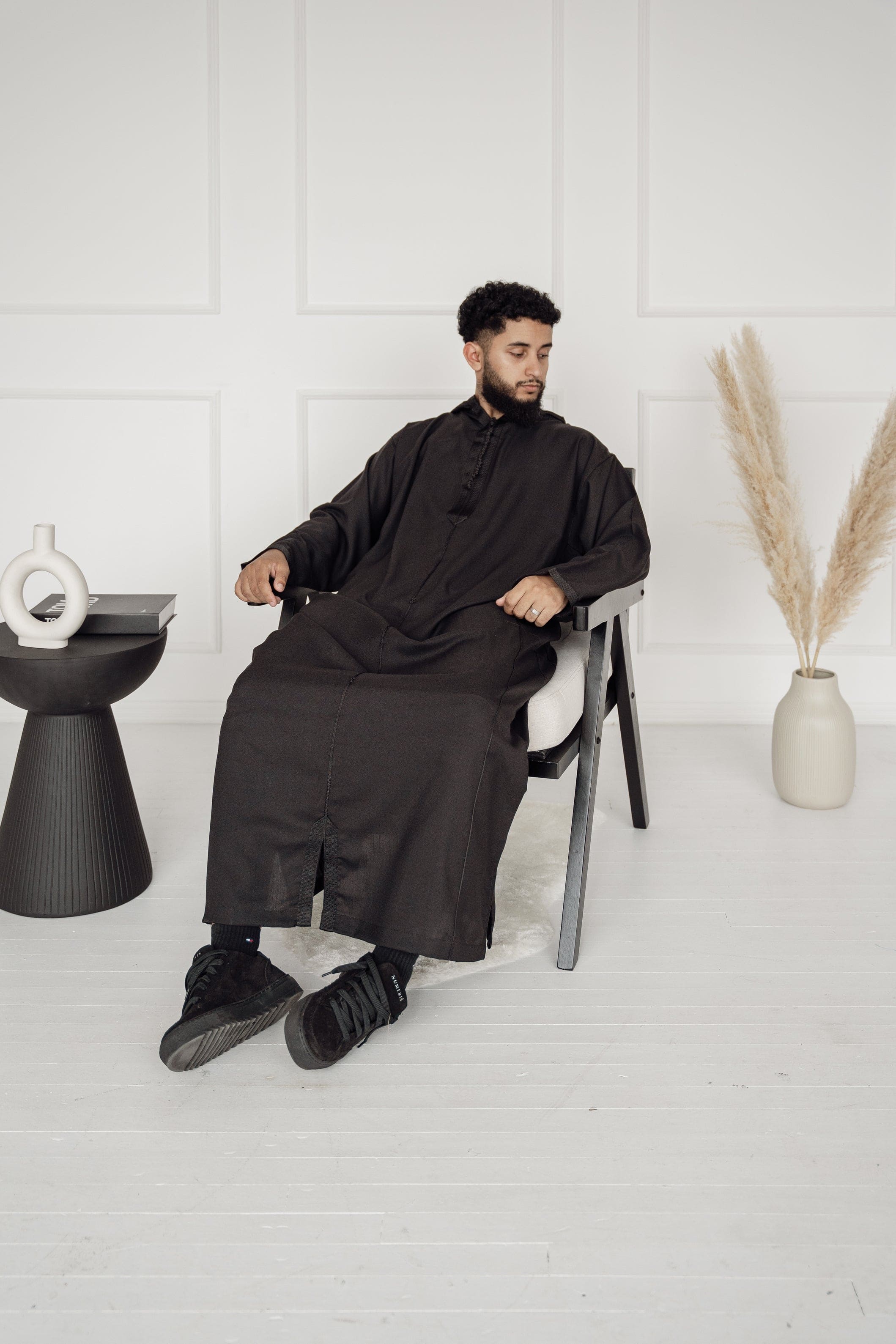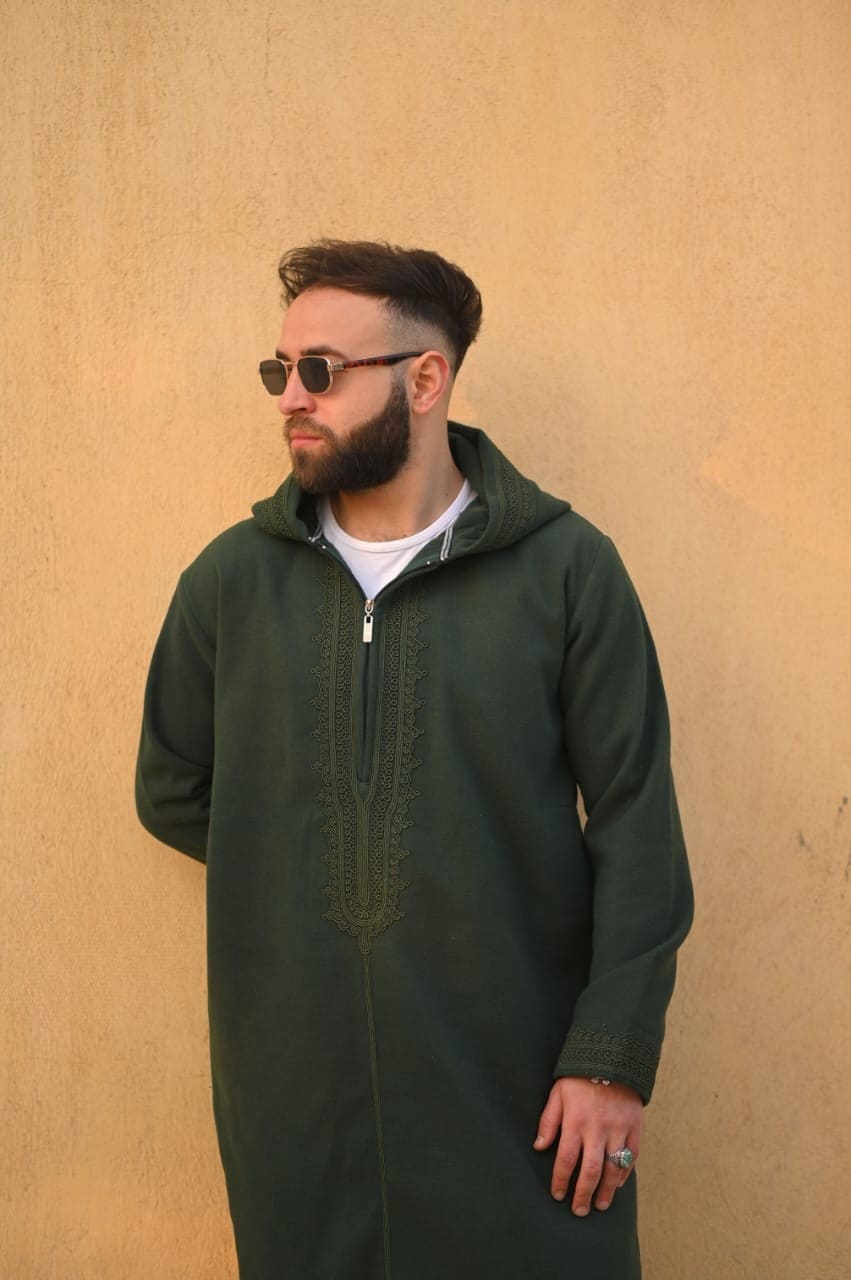The Arabian Peninsula offers an intricate tapestry of cultures woven through tradition and its shared environment, the most visible thread being traditional clothing - specifically the thobe. While similar garments exist across both the United Arab Emirates (UAE) and Saudi Arabia, closer examination reveals distinct features that set each apart. But the question is: What is the difference between Emirati and Saudi clothing?
Emirati Thobe
Emirati Thobes embody simplicity with their collarless design and focus on comfort, making everyday wear simple yet sophisticated. Commonly created from white cotton for everyday use or silk embellished with embroidery for formal events; distinguishable features of Emirati thobes include their decorative tassel (tarboosh). Emirati men wear theirs paired with an Agal (black cord headcloth). Browse our luxurious Moroccan Thobes to add some North African flare!
The Saudi Thobe
A Saudi thobe can feature a simple collar with buttons for a more specialized appearance than its Emirati equivalent. Furthermore, its length often reaches ankle-level and its wider sleeves provide additional sun protection. Although typically worn together with a checkered headcloth known as Bint Al Bakkar for formal events. Its versatility also extends into using different fabrics or embroideries with matching or contrasting piping or embroidery for any number of special events.
Visit our Thobes Shop and check out an impressive collection of authentic thobes crafted from top-quality materials.
Emirati vs Saudi Thobes: A Detailed Comparison
|
Feature |
Emirati Thobe |
Saudi Thobe |
|
Collar |
Collarless |
May have a simple collar with buttons |
|
Cut |
Simpler, looser fit |
Tighter fit |
|
Length |
Varies, often mid-calf to ankle |
Typically ankle-length |
|
Sleeves |
Shorter and narrower |
Wider and longer |
|
Tassel |
May feature a decorative tassel (tarboosh) at the front opening |
No tassel |
|
Headwear |
Paired with a ghutra (headcloth) held by an agal (black cord) |
Traditionally paired with a checkered headcloth (Bint Al Bakkar) |
|
Material |
White cotton for everyday wear, silk with embroidery for formal occasions |
Cotton or cotton-blend fabrics, thicker and more robust |
|
Formal Wear |
Can be made from silk with embroidery |
Often features contrasting piping and embroidery |
Beyond Practical Applications
Beyond its practical purposes, the thobe holds deep cultural meaning for men of Arabian Peninsula heritage. As well as serving practical functions it also represents religious practice and cultural identity markers within each country where variations exist depending on region and event.
What distinguishes Emirati and Saudi headwear?
The main distinction lies in the type of headcloth worn; an Emirati will often opt for cotton cloth while Saudi men prefer leather material head cloth.
- Emirati: Men in the UAE wear a plain white headcloth known as a "ghutra." Made of large square cotton fabric folded diagonally and secured by black cord rings called an "agal," this simple yet elegant headgear offers practicality in hot climates like Dubai.
- Saudi: In Saudi men traditionally wear the Bint Al Bakkar headcloth made of red and white checkered cotton cloth that folds diagonally when secured with an agal. This cloth adds color and pattern to their thobe attire.
Appreciation through Understanding
By understanding “What is the difference between Emirati and Saudi clothing?”, we gain a greater appreciation of Arabian Peninsula culture. Clothing provides insight into the history, values, and customs of any region; reminding us to celebrate cultural diversity!



